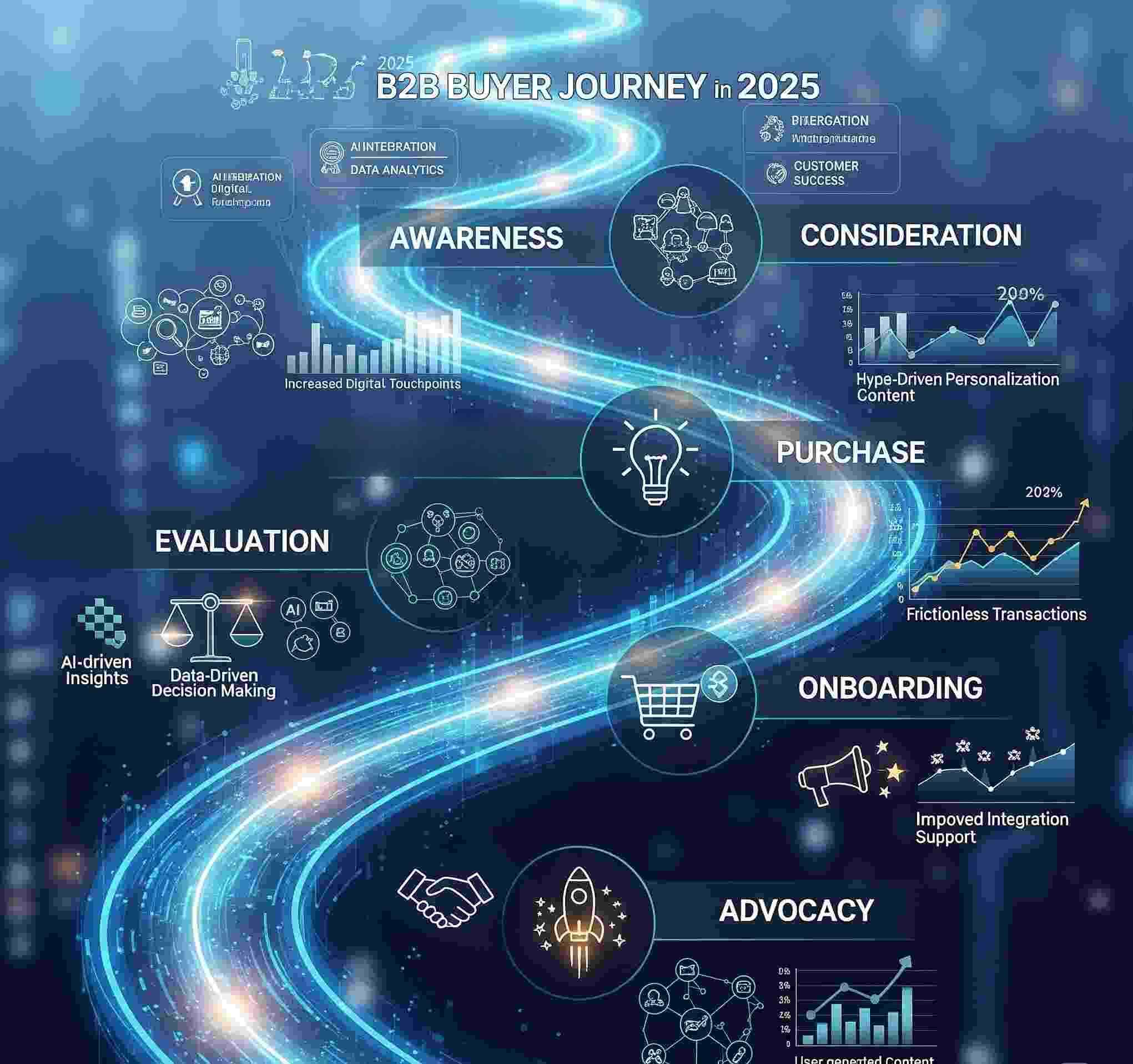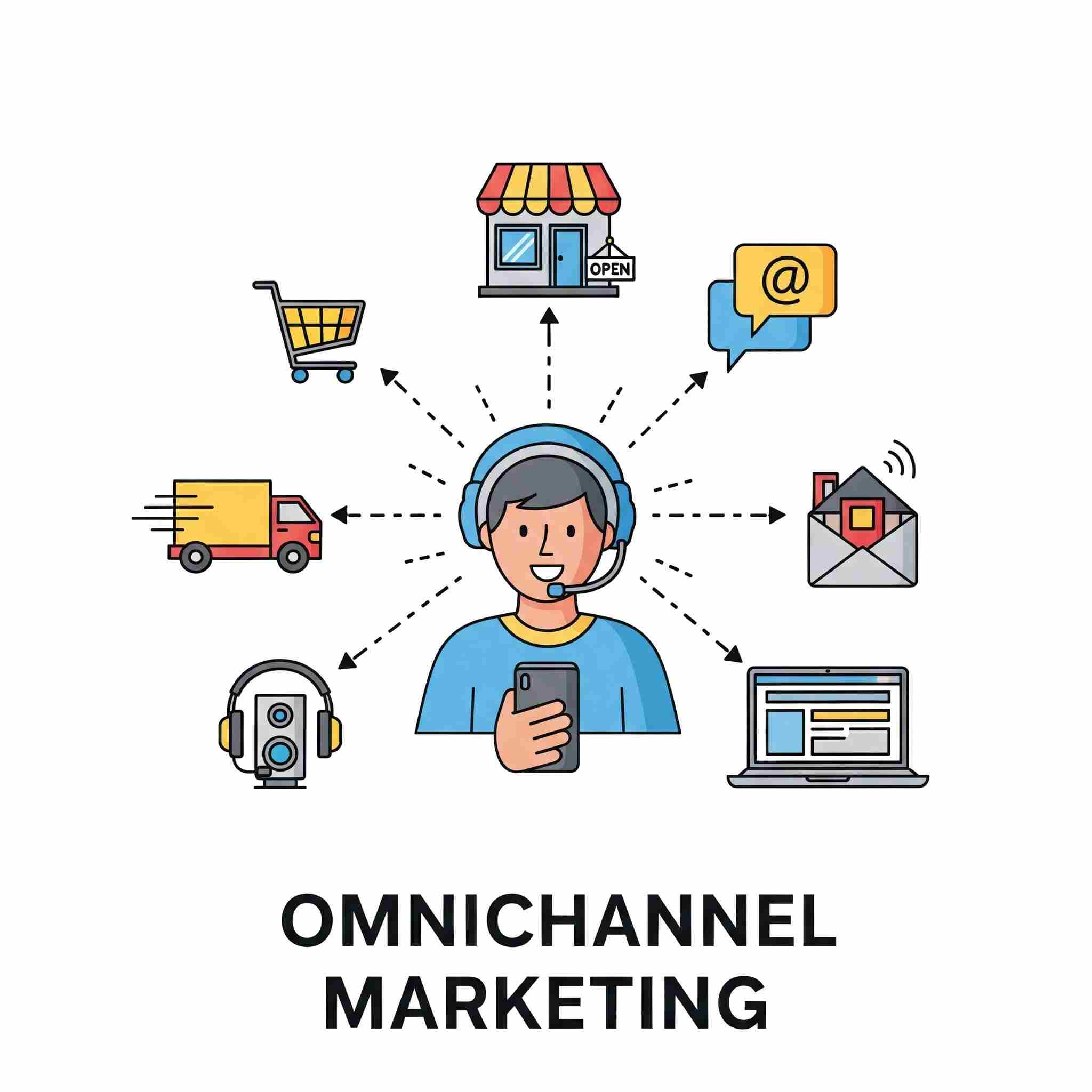B2B buying journeys are not what they used to be, even 5 years ago. Buying committees are larger, funnels have become non-linear, and buyers increasingly prefer a self-serve model over relying on reps.
What worked in 2020 will no longer work in 2025. To excel in the contemporary B2B buying environment calls for a better understanding of buyer personas and strategic changes to the sales & marketing approaches.
In this article, you’ll find out what’s changed in the world of B2B marketing, how it’s affecting the marketing process, and how you can adapt to the latest B2B marketing trends in 2025. Let’s dive in.
B2B Buyer Journey in 2025: Table of Contents
- What’s Changed in the B2B Buyer Journey?
- Emerging Trends in B2B Buyer Journeys
- Role of Behavioral Targeting in B2B Sales Cycles
- Updated Funnel Models in B2B Buying Journeys
- Adapt to 2025 B2B Buying Journeys with Lean Summits
- B2B Buyer Journey in 2025: FAQs
What is a B2B Buying Journey?
A B2B buying journey is the process through which business buyers go through before making a purchasing decision for their enterprise. This process involves research, evaluation, and decision-making. Unlike a B2B buying journey, a B2B buying process includes a lot of key decision-makers, which means you need to offer relevant information at all stages of the buying journey, tailored to different buyer personas.

What’s Changed in the B2B Buyer Journey?
1. The Shift from Linear Journeys to “Loopy” Journeys
There was a time when the B2B buying process was pretty straightforward:
Awareness (TOFU) ➡️ Consideration (MOFU) ➡️Decision (BOFU)
This is no longer the case – a “loopy” journey has replaced the linear journey. B2B buyers now go back and forth between different options. They revisit content, compare options, and then make an informed decision.
You can call this “loopy phase”, the messy middle – it’s when most of your deals are made or unmade, and that’s the part to which you must now pay a lot of attention.
2. B2B Buyers are Increasingly Self-Sufficient
Another key shift is that B2B buyers are no longer dependent on sales reps to make buying decisions. According to the latest Spotio research, 75% of B2B buyers prefer a completely rep-free sales experience. To offer them a self-serve buying experience, you need to create self-serve content like posts, videos, and whitepapers to guide buyers through their decisions.
3. B2B Buying Committees Have Become Larger
One very important change we’ve noticed is that B2B purchasing committees have grown larger compared to just 5 years ago. The typical B2B buyer group now includes 6-10 decision-makers, and can go up to 22 decision-makers for enterprise-grade deals. So, you must create different pitches for:
- CFOs who prioritise budgetary considerations.
- CTOs who want easy technical integration.
- End users who only look at functionality.

4. Behavioral Targeting is Key to B2B Sales
The last very big change has been in the field of behavioral targeting. Since businesses have access to more data than ever, they are using it to rethink their buying and selling decisions. You can now track anonymous website visitors, see who downloaded your whitepapers, and identify potential customers through prospect tracking services offered by platforms like G2.
Emerging Trends in B2B Buyer Journeys
1. “AI-Powered Everything” is on the Rise
AI has made buying processes more efficient on both the demand and the supply side. So, your prospects can use AI to:
- Create reports on different options on the market (through generative engines like ChatGPT).
- Learn more about your products and services (by talking to your website’s chatbot).
- Predict how their revenue would be affected by adapting or switching to your product/service (via predictive modeling).
In turn, you can use it to find prospects that fit your ICP, score leads based on intent + behavioral insights, and generate personalized pitches for leads.
2. Long-Tail Keywords + Search Optimization are Still Important
This brings us to our next important trend – the nature of search among B2B buyers. While it’s true that AI search is on the rise and website traffic is down wherever Google is showing AI overviews, generative & search engines still rely on proprietary content to address user queries.
If you create relevant content for each and every stage of your buyer’s journey, there’s a huge chance that the buyer will trust your product/service while making a decision.
3. Buyer Enablement is Now Critical
The logical way to adapt to a self-sufficient B2B buyer is to create organic tools to attract them. This means creating self-serve demos (free trials), detailed comparison guides, and a review page on platforms like Capterra, G2, and Trustpilot.

From what we’ve seen, peer reviews are particularly important to the contemporary B2B buying process. According to the latest HubSpot research, an increasing number of buyers distrust websites as credible sources of information, whereas peer reviews heavily influence their buying decisions. So, if you’ve not got your review pages set up already, that should be your number one priority.
Role of Behavioral Targeting in B2B Sales Cycles
Behavioral targeting is the process of using intent data and prospects’ search patterns to approach the right buyer at the right time with the right pitch. You can use page visits, whitepaper downloads, email engagement, form submissions, or even sign-ups for free trials to gauge user interest.
Another critical tool you can use for behavioral targeting is third-party data offered by platforms like Bombora or Clay. They help you find companies that fit very precise ICPs through filters like funding announcements, recent expansions, tech stacks and job postings. As soon as you see that a company has decided to expand into a new segment and is looking for tech administrators, you can approach them with a pitch for your cybersecurity solutions.
Updated Funnel Models in B2B Buying Journey
Let’s take a quick look at all the key changes in the B2B buying journeys by going through the differences in the sales funnels between 2020 and 2025.
| Aspect | 2020 Funnel | 2025 Funnel |
| Structure | Linear (TOFU → MOFU → BOFU) | Non-linear (“messy middle” loops) |
| Buyer Control | Sales-led | Buyer-led through digital self-research |
| Content Focus | Generic whitepapers/webinars | Interactive tools (ROI calculators, video testimonials, chatbots) |
| Stakeholders | 1–3 decision-makers | 6–10 cross-functional stakeholders |
| AI Integration | Minimal (basic chatbots) | End-to-end through predictive scoring, AI content, and peer reviews |
Adapt to 2025 B2B Buying Journeys with Lean Summits
The world of B2B marketing has been transformed through crucial changes in how prospects approach buying decisions and the amount of information they have at their fingertips. From different sales funnels and self-sufficient buyers to AI-powered tools and behavioral marketing, this article has broken down the key B2B marketing trends in 2025.
To excel in this changing environment, all you need is the right growth marketing services and a veteran agency to stand by you as you implement a strategy to adapt your sales approach to the latest shifts. At Lean Summits, that’s exactly what we offer you.
Over the past decade, we’ve consistently helped B2B industry leaders pivot to emerging changes in the world of generative AI and digital transformation. Reach out to us for a commitment-free consultation, tell us about your growth objectives, and let us help you reach the summit of your industry in 2025 and beyond.
B2B Buyer Journey in 2025: FAQs
1. How is the B2B buying process different in 2025 vs. 2020?
Gone are the linear funnels of 2020. In 2025, buyers loop through the “messy middle,” revisiting content, comparing vendors, and involving more stakeholders. 75% prefer self-serve research (posts, AI-generated reports, and free trials) over sales processes led by reps. You should adapt by creating interactive tools (ROI calculators, comparison guides) and personalized content for each B2B buyer persona.
2. What are the top B2B marketing trends in 2025?
Three top B2B marketing trends have emerged in 2025:
AI-powered everything: Chatbots, predictive lead scoring, and personalized pitches for specific B2B buyer personas.
Behavioral targeting: Use of intent data (e.g., whitepaper downloads, website visits, company updates) to identify high-intent accounts.
Peer reviews: 82% of buyers trust testimonials over vendor claims – so, you must optimize your G2/Capterra profiles.3. Why are buyer personas critical for B2B success?
With 6–10 stakeholders per deal, a one-size-fits-all B2B sales pitch might not work. For example, CFOs care about cost savings, end-users want smooth functionality, and CTOs need seamless integration. So, you should tailor your content to each persona’s priorities to shorten sales cycles.
4. How does behavioral targeting work in B2B sales?
Behavioral targeting is about using data to spot buying signals. So, you need to use first-party data (website visits, content downloads, and email engagement) or third-party data (from websites like Clay or Bombora) to discover prospects, score leads, and create tailored pitches.
5. What’s the #1 mistake brands make in 2025’s B2B journeys?



